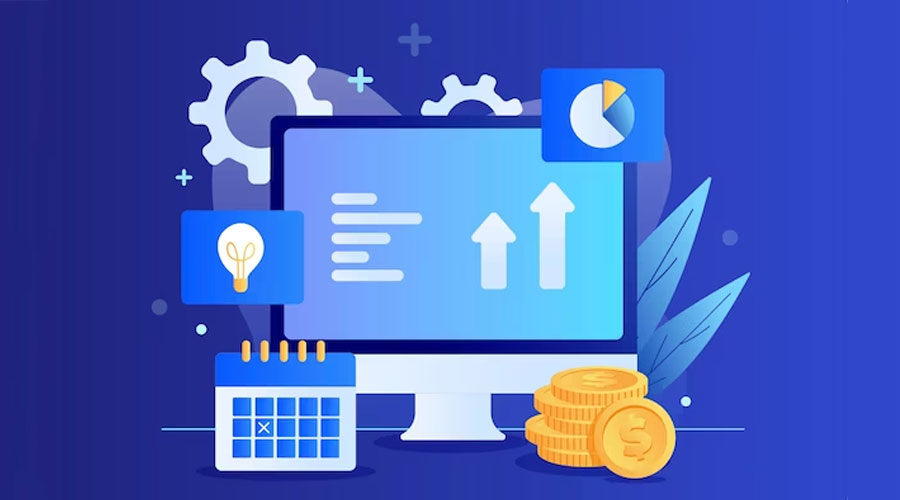Table of Contents
Importance of Legal Website Development
It’s essential to delve deeper into the significance of legal website development. The legal industry, much like other professional services, benefits immensely from a well-crafted online presence. Let’s explore some additional reasons why law firms must invest in website development:
- Client Convenience and Accessibility: Today’s clients expect information at their fingertips. A legal website offers clients the convenience of accessing essential information about the firm, its services, and its attorneys 24/7. They can research, gather details, and make initial inquiries at their convenience, which fosters a positive client experience.
- Global Reach: A legal website extends the reach of a law firm beyond its physical location. It allows firms to attract clients not only from their immediate area but also from different regions, states, or even countries. This global reach can open up new opportunities and markets for legal services.
- Building Thought Leadership: Legal professionals can use their websites to establish themselves as thought leaders in their respective fields. By regularly publishing insightful articles, legal updates, and thought-provoking content, they can position themselves as experts in their practice areas, which can attract clients and opportunities for speaking engagements or media appearances.
- Transparency and Trust: Clients value transparency when seeking legal services. A well-maintained website can be a platform for a law firm to demonstrate transparency by sharing information about fees, case processes, and success stories. This transparency builds trust and encourages potential clients to reach out.
- Cost-Effective Marketing: Traditional marketing and advertising methods can be costly for law firms. A website is a cost-effective marketing tool that can generate organic traffic and leads over time. It can also be complemented by paid advertising, but the website serves as a central hub for all marketing efforts.
- Competitive Advantage: In a competitive legal market, a professionally designed website can set a law firm apart from competitors. It’s not just about having a website; it’s about having a website that outshines others in terms of design, content, and functionality.
- Client Testimonials and Reviews: Legal websites often include sections for client testimonials and reviews. Positive feedback from past clients can significantly influence potential clients’ decisions, as it provides social proof of the firm’s capabilities and client satisfaction.
- Effective Communication: Websites provide a medium for efficient communication with current and potential clients. Through features like contact forms, live chat, or chatbots, law firms can address inquiries promptly, enhancing customer service.
- Data Analytics and Insight: A well-designed legal website can integrate analytics tools to track user behavior and preferences. These insights can inform marketing and content strategies, helping law firms continuously refine their online presence to better serve their audience.
- Crisis Management and Public Relations: In times of crisis or when handling sensitive legal matters, a website can be a valuable tool for managing public relations. Firms can use their websites to provide updates, statements, and reassurance to clients and the public.
- Compliance and Disclaimers: Legal websites can include disclaimers and terms of use that help ensure compliance with legal regulations and protect the firm from potential liabilities.
- Client Education: Legal websites can serve as educational platforms, helping clients better understand legal processes, terminology, and their rights. Informed clients are more likely to make sound legal decisions and work effectively with their attorneys.
Key Features of a Legal Website
FAQ Section
An FAQ (Frequently Asked Questions) section can be invaluable for addressing common queries from potential clients. This section can provide concise, straightforward answers to questions about legal procedures, fees, and other relevant topics.
News and Updates
Keeping clients informed about changes in the law, recent case outcomes, and legal news demonstrates the firm’s commitment to staying current and providing valuable insights to its audience.
Video Content
Including video content, such as informational videos or interviews with attorneys, can engage visitors and convey complex legal concepts more effectively. Video content can help build a personal connection with potential clients.
Online Chat and Support
Live chat or chatbot features can offer real-time assistance to visitors, answering basic questions and directing them to the right resources or staff members. This feature can improve user engagement and customer service.
Client Portals
Client portals provide a secure area where existing clients can access their case documents, communicate with their attorney, and track the progress of their legal matters. This feature enhances transparency and client satisfaction.
Multilingual Support
In regions with diverse populations, offering a multilingual website can broaden a law firm’s reach and make legal information accessible to a more significant number of potential clients.
Events and Webinars
Hosting webinars or in-person events, and listing them on the website, can showcase the firm’s expertise and offer clients an opportunity to learn more about legal topics in an interactive format.
Social Media Integration
Including social media integration allows visitors to connect with the firm on various social platforms, expanding the firm’s online presence and fostering engagement.
Online Payment Options
For client convenience, providing secure online payment options for legal services and fees can simplify the billing process and enhance client satisfaction.
Analytics and Tracking
Incorporating analytics tools allows the firm to gather data on website performance, visitor behavior, and user demographics. This data is essential for making informed decisions and improving the website’s effectiveness.
Local SEO Optimization
Law firms often rely on local clients. Implementing local SEO strategies, including location-specific keywords and Google My Business optimization, can help the website appear in local search results.
Terms of Use and Privacy Policy
Including clear and accessible terms of use and privacy policy pages ensures that the website complies with legal requirements and builds trust with users regarding data privacy.
Online Booking and Scheduling
Offering online booking or scheduling capabilities for appointments or consultations streamlines the process for potential clients and can lead to increased conversions.
By incorporating these additional features into a legal website, law firms can further enhance their online presence, user engagement, and client satisfaction. The specific features to include will depend on the firm’s goals, target audience, and the regulatory environment in which it operates.
Online Marketing for Law Firms
In conjunction with website development, online marketing plays a pivotal role in the success of law firms in the digital age. Legal professionals must leverage various online marketing strategies to promote their services, reach a broader audience, and establish their expertise. This addition to the discussion explores the significance of online marketing for law firms, key online marketing tactics, and best practices to drive successful online campaigns.
I. The Significance of Online Marketing for Law Firms
1.1. Competitive Advantage
In a highly competitive legal market, online marketing offers a means to gain a competitive edge. It allows law firms to stand out, differentiate themselves, and reach potential clients more effectively.
1.2. Enhanced Visibility
Online marketing efforts, such as search engine optimization (SEO) and paid advertising, increase a law firm’s visibility in search engine results. Improved visibility can result in higher website traffic and greater brand recognition.
1.3. Cost-Effective Outreach
Compared to traditional marketing methods, online marketing can be a more cost-effective way to reach a wider audience. Strategies like content marketing, email campaigns, and social media advertising offer a high return on investment.
1.4. Targeted Marketing
Online marketing enables law firms to target specific demographics and niches more precisely. This allows for more personalized and effective marketing campaigns.
II. Key Online Marketing Tactics for Law Firms
2.1. Search Engine Optimization (SEO)
SEO is a fundamental strategy for law firms to rank well in search engine results. Optimizing website content, meta tags, and backlinks can help attract organic traffic and establish authority in specific legal niches.
2.2. Content Marketing
Creating valuable and informative content is essential. Blog posts, articles, whitepapers, and case studies can demonstrate expertise and establish a law firm as a thought leader in the industry.
2.3. Pay-Per-Click (PPC) Advertising
PPC advertising, such as Google Ads, allows law firms to bid on relevant keywords and display ads to users searching for specific legal services. This strategy can deliver immediate results.
2.4. Social Media Marketing
Active participation in social media platforms can help law firms connect with potential clients. Sharing legal insights, engaging with the community, and promoting content are effective social media strategies.
2.5. Email Marketing
Email marketing campaigns can nurture client relationships and keep the firm’s services at the forefront of clients’ minds. Providing valuable insights and updates can lead to client retention and referrals.
2.6. Online Reviews and Reputation Management
Online reviews on platforms like Google My Business and Avvo are critical for building trust and credibility. Reputation management is key to ensuring positive online feedback and addressing any negative reviews professionally.
2.7. Video Marketing
Video marketing has become increasingly popular. Law firms can use video content to explain legal processes, showcase their attorneys, or discuss recent legal developments.
III. Best Practices for Online Marketing in Law Firms
3.1. Compliance with Ethical Rules
Legal professionals must adhere to ethical rules and regulations when conducting online marketing campaigns. This includes rules regarding advertising, solicitation, and client confidentiality.
3.2. Consistency in Branding
Maintaining consistent branding across all online marketing channels and the firm’s website is crucial. This includes logos, color schemes, and messaging.
3.3. Analytics and Data Analysis
Continuous monitoring and analysis of marketing efforts are essential. Utilizing tools like Google Analytics helps law firms understand the effectiveness of their campaigns and make data-driven decisions.
3.4. Professional Website Integration
Online marketing should be tightly integrated with the firm’s website. Landing pages, contact forms, and tracking codes can help convert visitors into clients.
3.5. Client-Centered Approach
Online marketing efforts should be tailored to address client needs and concerns. Content should answer common legal questions, provide solutions, and offer valuable insights.
3.6. Adapting to Algorithm Changes
Search engine algorithms and social media platforms constantly evolve. Law firms must stay up to date with these changes and adapt their strategies accordingly.
Budgeting and Costs for Legal Website Development
Budgeting and cost considerations are pivotal aspects of legal website development. In addition to understanding the importance of having a website and the essential features it should possess, law firms must also be mindful of the associated expenses. This section will delve into the financial aspects of creating and maintaining a legal website, outlining the various costs involved and providing insights into effective budgeting.
I. Initial Website Development Costs
1.1. Domain Registration
The first cost associated with a legal website is domain registration. This involves purchasing a unique web address (e.g., www.yourfirmname.com). The cost varies depending on the domain registrar and the domain name’s popularity and extension (e.g., .com, .legal, .attorney).
1.2. Hosting
Web hosting is essential to make your website accessible on the internet. The cost depends on factors like the hosting provider, the type of hosting (shared, VPS, dedicated), and the hosting plan’s features and capacity.
1.3. Website Design and Development
Design and development costs can vary significantly depending on the complexity and features of the website. Law firms may opt for pre-designed templates or invest in custom design and development services. Custom solutions generally come at a higher cost due to the tailored nature of the work.
1.4. Content Creation
Content is a significant part of a legal website, and creating high-quality text, images, and other media can be a substantial investment. Legal content may require specialized expertise and could involve hiring copywriters, photographers, or videographers.
1.5. SEO and Marketing
Effective SEO strategies and marketing are crucial for driving traffic and converting visitors into clients. Costs for these services depend on the level of competition in the legal niche and the chosen marketing channels (e.g., pay-per-click advertising, content marketing, social media).
1.6. Legal Compliance and Security
Legal websites must adhere to regulatory standards, and compliance often requires legal consultation or the services of a web developer familiar with legal industry requirements. Security measures, such as SSL certificates, firewall software, and regular security audits, incur costs as well.
1.7. Maintenance and Updates
After the initial launch, maintaining and updating the website is an ongoing expense. Costs here can include content updates, software updates, security monitoring, and occasional design enhancements.
II. Ongoing Operational Costs
2.1. Hosting Renewal
Hosting providers charge ongoing fees for maintaining server access and ensuring your website remains available. Renewal fees may increase if the website experiences significant traffic growth.
2.2. Content Updates
Keeping the website’s content fresh and relevant is an ongoing process. Costs associated with content updates may include copywriting fees, legal research, and graphic design services.
2.3. SEO and Marketing
To maintain and improve your website’s search engine rankings and reach a wider audience, ongoing investments in SEO and marketing are essential. This includes ad spend, SEO tools, and hiring marketing professionals.
2.4. Legal Compliance
Legal regulations may change over time, necessitating updates to the website to remain compliant. Legal consultation or web developer services may be required to ensure that the website meets evolving legal standards.
2.5. Backup and Security
Regular website backups and security measures are critical to protect against data loss and cyber threats. These entail both time and financial costs, as well as potentially investing in security software or services.
III. Budgeting Strategies for Legal Website Development
3.1. Define Clear Objectives
Before budgeting, clearly define the website’s objectives and its expected role in your firm’s growth. This will help allocate resources more effectively.
3.2. Prioritize Expenses
Prioritize expenses based on the most critical elements of your website. For instance, if content is central to your online strategy, allocate a significant portion of your budget to high-quality content creation.
3.3. Competitive Analysis
Research what competitors are doing with their websites. This can provide insights into the features and functions that are essential and help you set a realistic budget.
3.4. Consider Long-Term Costs
When budgeting, consider both immediate and long-term costs. Building a sustainable online presence may require ongoing investments to remain competitive and compliant.
3.5. Seek Multiple Quotes
When selecting service providers, seek multiple quotes to ensure you are getting a fair price for the services you need. This applies to web designers, developers, copywriters, and marketing professionals.
3.6. Plan for Scalability
Consider how your website’s needs might change in the future. Ensure that your budget can accommodate potential expansion, whether that means adding more features, scaling up hosting resources, or increasing marketing efforts.
Case Studies and Examples
Case Study 1: Baker & McKenzie – Global Law Firm
Background: Baker & McKenzie is a prominent global law firm with a presence in over 45 countries. They recognized the importance of a strong online presence to reach a diverse client base and showcase their international expertise.
Website Features:
- Clear and intuitive navigation with a user-friendly menu structure.
- Comprehensive attorney profiles with detailed information on their experience and specialties.
- Practice area pages highlighting their extensive range of legal services.
- A regularly updated blog with global legal insights.
- Multi-language support for global clientele.
- A mobile-responsive design ensuring accessibility on all devices.
Result: Baker & McKenzie’s website effectively demonstrates their global reach and expertise, making it easier for clients to find information relevant to their legal needs, whether it’s international trade, mergers and acquisitions, or intellectual property law.
Case Study 2: Morgan & Morgan – Personal Injury Law Firm
Background: Morgan & Morgan, a prominent personal injury law firm in the United States, understood the need to connect with potential clients who have suffered accidents or injuries.
Website Features:
- A clear call-to-action on the homepage to encourage potential clients to contact the firm.
- Engaging personal injury case studies with successful outcomes.
- Attorney profiles emphasizing their experience in personal injury cases.
- A live chat feature for immediate communication with potential clients.
- Client testimonials and reviews highlighting their success in representing clients.
- An informative blog covering various personal injury topics.
Result: Morgan & Morgan’s website effectively targets their specific clientele – individuals seeking personal injury representation. The site not only educates visitors but also invites them to take immediate action, resulting in a high conversion rate for potential clients.
Case Study 3: Fenwick & West – Technology and Life Sciences Law Firm
Background: Fenwick & West is a law firm specializing in technology and life sciences. They recognized the need for a website that would resonate with tech-savvy clients and emphasize their expertise in these sectors.
Website Features:
- A modern and minimalist design that aligns with the technology industry.
- Detailed descriptions of the firm’s work in tech, venture capital, and life sciences.
- Attorney profiles showcasing their tech and life sciences backgrounds.
- A resources section featuring whitepapers and webinars on relevant legal topics.
- An events calendar for tech industry seminars and conferences.
- Integration with LinkedIn for professional networking.
Result: Fenwick & West’s website effectively targets its niche audience in the technology and life sciences sectors. The site communicates their in-depth knowledge and commitment to these industries, making them a top choice for startups and established companies.
Case Study 4: Legal Aid Society – Nonprofit Legal Services
Background: The Legal Aid Society is a nonprofit organization providing legal services to those who cannot afford representation. They recognized the need for an informative website to help disadvantaged individuals access legal resources.
Website Features:
- Clear and empathetic language tailored to their target audience.
- Comprehensive information on legal rights and available services.
- Online forms for pro bono legal assistance requests.
- A directory of legal aid clinics and contact information.
- Regularly updated news and legal updates.
- A mobile-responsive design for accessibility to users on various devices.
Result: The Legal Aid Society’s website effectively serves its mission of providing legal assistance to those in need. It empowers individuals to understand their legal rights and access vital resources, contributing to increased access to justice.
These case studies illustrate how law firms, both large and small, can tailor their websites to meet the specific needs of their clientele, whether on a global scale or within a niche practice area. By understanding their target audience and implementing the right features, these firms have harnessed the power of the internet to connect with clients and provide valuable legal services.
Future Trends in Legal Website Development
The world of technology and web development is constantly evolving, and this evolution has a significant impact on legal website development. To stay ahead of the curve and meet the changing expectations of clients and users, law firms must pay attention to emerging trends in website development. Below, we explore several future trends in legal website development that are likely to shape the industry in the coming years.
- Artificial Intelligence (AI) Integration:
- AI is becoming increasingly prevalent in the legal industry, from contract analysis to virtual legal assistants. Legal websites can integrate AI-driven chatbots to provide quick and personalized responses to user queries, schedule appointments, and offer basic legal advice.
- Voice Search Optimization:
- As voice-activated devices and virtual assistants like Siri and Alexa become more mainstream, optimizing legal websites for voice search will be essential. This includes using natural language in content, targeting long-tail keywords, and ensuring mobile-friendliness.
- Blockchain for Document Security:
- Blockchain technology can enhance document security for legal firms. Storing sensitive legal documents on a blockchain can provide an immutable and secure record of transactions and agreements, increasing client trust.
- Progressive Web Apps (PWAs):
- PWAs combine the best of websites and mobile apps. They offer fast loading times, offline access, and an app-like experience. For law firms, PWAs can improve user engagement and retention, as well as deliver a smooth experience across different devices.
- Personalization and User Experience (UX):
- Users expect personalized experiences. Legal websites can use data analytics to tailor content, offers, and services to individual users, enhancing their experience and increasing the likelihood of conversion.
- Data Privacy Compliance:
- With the General Data Protection Regulation (GDPR) in Europe and similar regulations emerging worldwide, law firms must ensure their websites comply with data privacy laws. This includes transparent data collection, consent management, and secure data storage.
- Virtual Reality (VR) and Augmented Reality (AR):
- While not yet widespread in the legal industry, VR and AR can offer immersive experiences for clients. For example, they can tour a virtual courtroom or engage in a virtual meeting with their attorney, enhancing client engagement and understanding.
- Content Automation and Chatbots:
- As demand for legal services grows, law firms can use content automation tools to streamline the creation of legal documents and chatbots to handle routine client inquiries. This frees up attorneys to focus on more complex tasks.
- Localization for Global Firms:
- For global law firms, creating localized versions of their websites to cater to different regions and languages is crucial. Localization includes not only translating content but also adapting it to the cultural and legal nuances of each region.
- Video Marketing and Webinars:
- Video content can be an effective way to engage and educate clients. Law firms can use webinars and video marketing to explain legal topics, showcase expertise, and connect with potential clients on a personal level.
- Cybersecurity Emphasis:
- As the legal industry handles sensitive information, cybersecurity will remain a top priority. Law firms will invest in robust security measures, secure cloud storage, and regular security audits to protect client data.
- Environmental and Social Responsibility:
- Law firms may emphasize their commitment to sustainability and social responsibility on their websites. This includes showcasing eco-friendly practices, community involvement, and pro bono work.
- Data Analytics and Predictive Analysis:
- Law firms can harness the power of data analytics and predictive analysis to gain insights into legal trends, enabling them to proactively address emerging legal issues and provide more value to clients.
Incorporating these future trends into their website development strategies, legal professionals and law firms can ensure that their online presence remains relevant and continues to meet the evolving needs and expectations of clients and users. Staying adaptable and embracing these developments will be crucial for success in the digital age of the legal industry.















